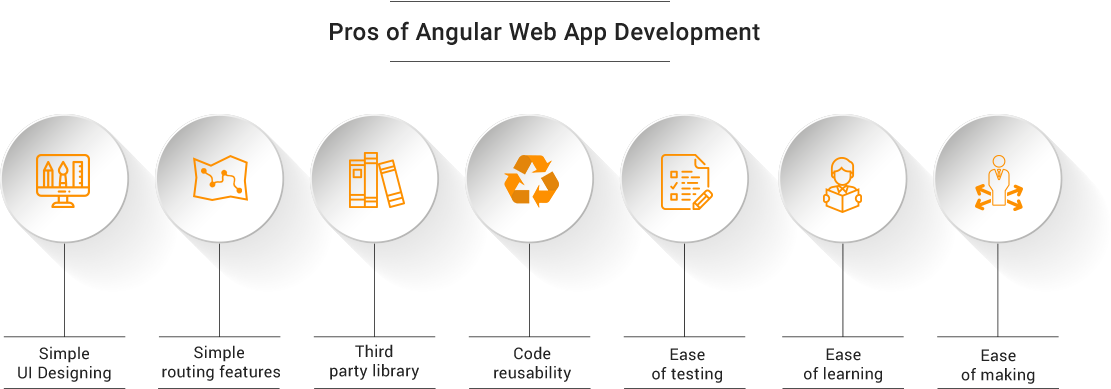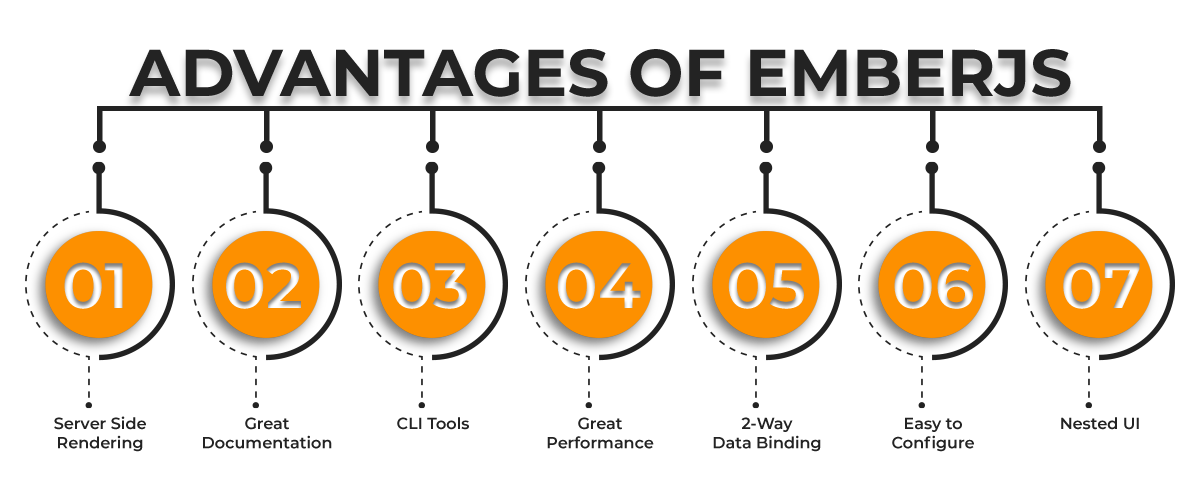Web apps are in trend today. If you want to enjoy a competitive edge in the market with your web apps, you need to choose the right JavaScript framework that goes well with your project requirements.
So you have finally decided to build a website or an application which is based on JavaScript!
The success of your project maybe considerably depended on the kind of framework you choose for it. This decision can greatly influence the ability of your developers to focus on completing the project on time as well as maintain the code for future purposes. By choosing JavaScript frameworks like AngularJS or Ember.js you will be able to come up with well-structured codes as well as keep them organized. This will make your app more scalable and flexible while easing the development process.
The Changing Scene of JavaScript – Angular vs Ember
There are constant changes taking place in the arena of Javascript development. You can see a new JavaScript framework coming up every month as well as the existing ones getting updated frequently. With these frameworks being open source, they are backed by large and strong communities. They constantly work on it to make it better. This makes it quite challenging to understand each framework, its benefits and the differences that they have.
The only way you can know more about them is keeping your pace up and learning about the new things. AngularJS and Ember.js are two popular JavaScript frameworks which are available in the market.
Without much ado, let’s see what they are and what they have to offer.
What is AngularJS?
AngularJS is an open source web application framework. AngularJS comes with MVC (Model-View-Controller) architecture, while Angular 2 comes with MVVM (Model-View-ViewModel) architecture. It is present in the market for quite a long time now and so it has the largest community of developers and technology experts at its support. AngularJS promptly resolve the issues with developing single page applications as it extends the functionality of HTML using the directives. The framework works on to ensure the app gets completed on time and starts working quickly. Today 968,139 live websites are using AngularJS and 44.3% software engineers prefer Angular for building intuitive and interactive UI – – source.
AngularJS enjoys 59,512 stars on GitHub.
LookinG for Angular developers to hire?
Get in touch to develop highly scalable web app project.
Pros and cons of AngularJS
Advantages of AngularJS
- UI design and alteration is straightforward
- Building Document Object Model elements in a personalized manner
- Easy-to-test code
- Dependency injection
- When it comes to working on HTML document and creating input fields, data binding is separately created for each field that is rendered. Before carrying out re-rendering, Angular checks each and every bound field which is available on the page.
- Amazing for code reuse
- When it comes to rendering static lists its fast
- The framework creates reusable components using directives while facilitating the extension of HTML syntax.
- Template building solutions are robust. To drive templating functionality, it uses binding expressions in attributes of HTML. The templating engine of Angular understands the DOM well and it comes with well-structured templates which greatly reduces the amount of the code which is needed on the resulting page.

Disadvantages of Angular
- Third party integration is complex
- You can use the scopes easily, but it is hard when it comes to debug
- Angular becomes slow in case of pages which comes with a large number of interactive elements
- Router is limited
- Directive API is complex
- The learning curve is steep
- The original design is not fast
Ember.js
Ember.js is an open source JavaScript application framework. It is used by developers to build single page web applications for client side. It makes use of MVC architecture. For structuring different applications with the idea in mind on scalability, this framework offers an URL-driven approach for structuring and offers universal data binding. Ember was originally SproutCore 2.0 and later it was acquired by Facebook which renamed it as Ember.js. This JavaScript framework combines the native frameworks for its proven concepts along with lightweight sensibilities. Currently, 52,149 live websites are using Ember.
Ember.js enjoys 20,974 stars on GitHub.
Pros and cons of Ember
Advantages of EmberJS
- URL-support
- Convention over configuration. Ember works by coming up with naming conventions and then generating resulting code automatically instead of offering a completed and detailed configuration for the different routes in the application. Where the conventions are not allowed, it offers earmarking configurations.
- Minimizes DOM
- Nested UIs
- To scale web applications above the view layer, it offers client-side rendering and structure.
- The data layer, which is stronger and well integrated with Java.
- Object model of Ember offers Key-Value Observation
- Ember can work with a larger application ecosystem
- Docs and API are friendly
- To change values, it uses observers; as a result, the value which has been changed gets rendered.
- Templating mechanism is well-built, which reduces the amount of code written on an overall basis. It has no idea of DOM and so for building the HTML document dynamically, it completely depends in text manip
- By using accessories, it avoids dirty checking
- Inherent stability and faster boot times
- Focused on performance

Disadvantages of EmberJS
- The learning curve is steep
- At the Controller level, Ember.js lacks the functionality of component reuse
- This is the heaviest and most opinionated frameworks out there.
- Testing seems to be here incomplete
- The object model implementation of Ember gets bloated by its huge size and while debugging it call stack.
- DOM gets polluted by Handlebars which come with many <script> tags. Ember use these tags to keep the templates updated along with the model.
- There are large volumes of content and examples related to Ember which does not work any longer.
- Ember is not suitable for smaller projects. It gets overblown.
- When you choose it for other work rather than the traditional one, it turns out to be cumbersome.
Angular vs Ember in terms of features
Dynamic UI binding
AngularJS allows UI binding at property level apart from a plain object. Without having to consume the DOM updates time, it is possible to update more than one data binding simultaneously.
While in the case of Ember, it makes use of Handlebars default template engine. On your Model to update a value, you will have to use a specific setter method which is bound to the UI, while Handlebars will render your page. There is another binding option available too; this includes having a Model for one or two-way data binding with a View or some other Model.
Opinionation
Opinionation is flexible. When it comes to implementing your own client-side stack, it offers you some flexibility.
Ember has opinionation of higher level. It has a stronger opinion about the building of the application; it makes a lot of assumptions and knows well how to make you work towards it.
Reusable components
The components of Angular is known as Directives while comparing with Ember components; they are quite powerful. By using it, you can create reusable HTML syntax and your own semantics.
Ember components have a widget-based approach. Ember’s backend infrastructure and Handlebars layout help to write HTML tags, which are your own application specific. Then in any Handlebar template, you can use custom elements.
Routing
Angular needs a controller or template for its router configuration and it has to be manually managed. Ember, on the other end, comes with more complex routing, which is much powerful.
Data binding
Angular as well as Ember offers two-way data binding.

AngularJS vs Ember.js performance comparisons
If we compare AngularJS with Ember.js, Ember.js can help you build the app faster and make it start running. As said above, Ember is opinionated and so it is important to know how it works. This is very important, especially when you are working with larger teams. When there are technical decisions to be made, then Angular development can be better. Instead of understanding how the framework works, you can focus on how the project will work when you look at things from the learning perspective. This ability to decide the structure of the app lets you have fewer codes with Angular for projects that are simple.
The Final Call – Which framework to choose from?
When it comes to choosing the framework which is right for you, you need to consider the strength of the framework in question as well as your project needs. You need to have an idea about the pros and cons of both frameworks and know how they will work in certain use cases. They may have a number of common elements like being open source, MVC design, permissive license, etc. However, it is essential to know that different frameworks work well for different applications. Angular is quite popular and is in used for large enterprises app development. You can choose Ember when you need an approach, which is an all-tools-included framework.
Are You Still in Dilemma of Choosing Between
Angular and Ember?





 Say
Say